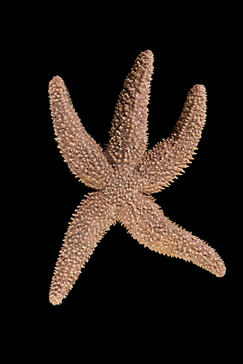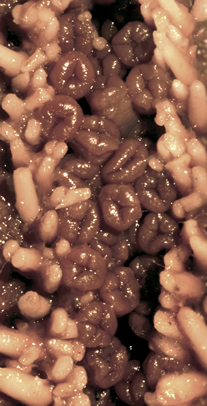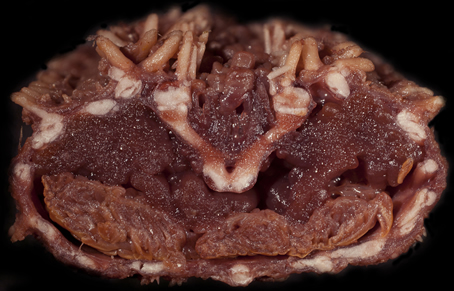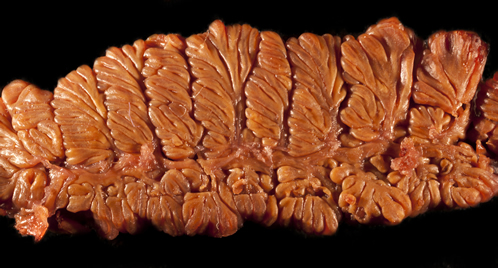The Sea Star
In Earth’s oceans there are about 1,800 different species of starfish. They inhabit many oceans including the Atlantic, Pacific, Indian, and Arctic. Starfish can live in many depths ranging from intertidal to abyssal.
Scientific Classification
Kingdom: Animalia
Phylum: Echinodermata
Subphylum: Asterozoa
Class: Asteroidea
Anatomy
The shape of the starfish is described as being pentaradial, which means the star is divided up into five equal sections where the axis is the mouth. Starfish are made up of five legs that extend out from the central disk. The central disk surrounds the internal organs, such as the stomach and some of the intestines. The central disk is also where the mouth and anus can be found.
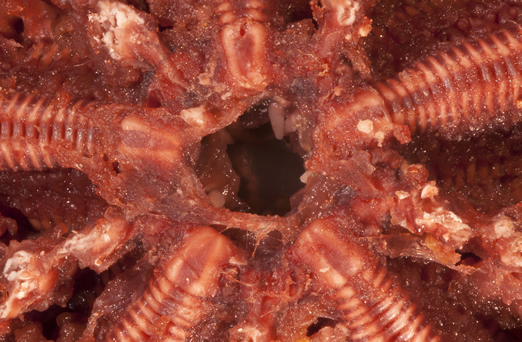
ring canal - this is the top view of the ring canal where the stomach and legs of the starfish are attached.

Mouth- The center is where the stomach, it is also where the legs attach to the ring canal.
On the skin of the starfish, there are spines and gill like projections that act as lungs. The gills take oxygen from the atmosphere and transport it into the body. On the topside of the starfish there is a spot of skin called the madreporite. The madreporite’s job is to bring water into the body for respiratory purposes
.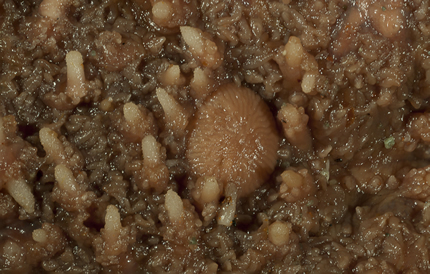
Madreporite- The madreporite is where the starfish can draw water into the body.
On the underside of the starfish where the legs come to a point, the mouth of the starfish can be seen. On the underside of the legs there are little projections called tube feet. The tube feet help the starfish move, grab on to things, breath, and eat.
Tube feet- the tube feet aid the starfish in movement and capture of prey.
The inside of the starfish, where the leg meets the central disk, is where the gonads and digestive glands are located. Down the length of the leg is the radial nerve. The radial nerve is a bundle of nerves that spans the length of the leg protected by a spine like tube called the radial canal.
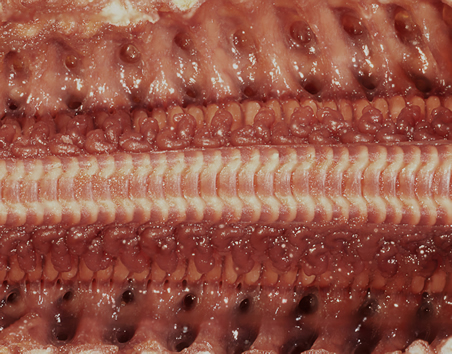
Radial Canal-In this shot the gonads and pyloric caeca are removed to better show the radial canal.
Cross section of leg shows: (from bottom to top) pyloric caeca, gonads,radial canal,and tubefeet.
Diet
Starfish are generally predators. They eat mollusks, clams, oysters, snails, and other organisms that are too slow to get away, such as dying fish. The tube feet assist the the starfish in eating it’s prey. The tube feet grab the prey and pry it open so the stomach can reach into the shell and digest the clam.

Stomach on the underside of starfish where the legs meet in the center.
pyloric caeca- Digestive organ found in the top of each leg of the starfish.
Reproduction
Starfish can reproduce sexually and asexually. In sexual reproduction, the starfish release their gametes into the atmosphere and other starfish fertilize them. To increase the chances of fertilization starfish gather in groups. During reproduction, they use environmental and chemical signals to coordinate with the other starfish.
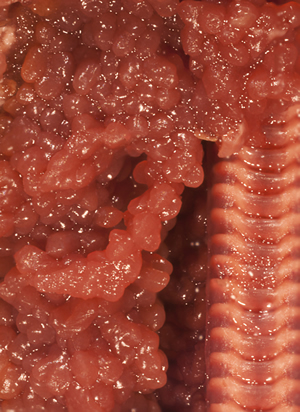
Gonads found on the left side of the radial canal.
During asexual reproduction the starfish will use fragmentation to detach an arm. That arm is able to grow into a new starfish , but it needs to have a piece of the central disk in order for it to survive.
About the Specimen and Photographic Technique
The star fish was a preserved specimen, soaked in warm water to rehydrate. The starfish was placed on a lab jack with two fiber optics — one on each side. As a background, black velvet was used to enhance contrast. The combination of a Nikon D700 and a 20,38, and 48mm thimble lens were used to get different magnifications for certain parts of the starfish. Photoshop CS5 and Camera Control Pro 2 were used to capture and edit the images.
About the Photographer
My name is Taylor Pannell and I'm a Junior at the Rochester Institute of Technology. I am majoring in Biomedical Photographic Communications. I love nature photography and microscopy. I hope to do one or both for a living someday.
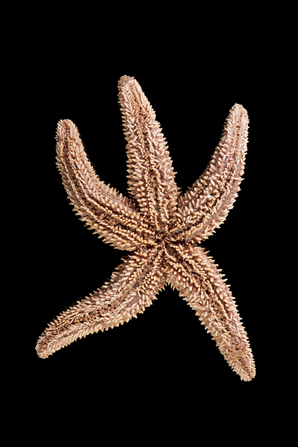
Images by Taylor Pannell - Tap9319@rit.edu
sources:
http://en.wikipedia.org/wiki/Starfish
http://www.oceanlink.info/biodiversity/seastars/seastars.html
